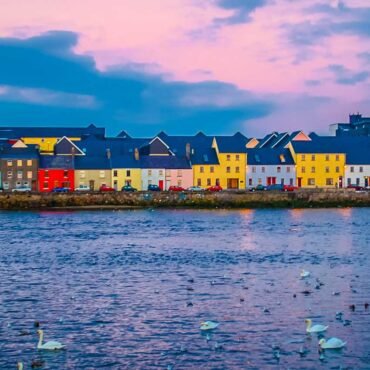The 2020s are a decisive decade for climate action. With now only 8 years left to achieve 2030 climate targets, radical and rapid transformation from businesses and the global economy is essential. And if we fail? The IPCC’s Sixth Assessment Report made the message clearer than ever: the consequences will be devastating.
Climate change is a global issue, requiring action from the global community. In 2015, the COP21 Paris Agreement set the ambition to limit global temperature rise to 1. (Tramadol) 5 degrees. The following Nationally Determined Contributions at COP21 and COP26 aim to achieve net zero by mid-century.
These ‘top-down’ climate commitments set by nations cascade down into legislation and sector priorities across the whole economy. We now know that the built environment sector is directly responsible for 25% of UK emissions and therefore needs to make real tangible carbon savings to achieve UK targets. As global, national and sectoral net zero ambitions have solidified, there has been a growth of interest around net zero initiatives from built environment stakeholders dealing with the issue on the ground.
This rapid influx of net zero initiatives has provided the built environment industry with a tremendous amount of choice when it comes to developing their net zero ambitions, but it is not always clear which initiatives are most relevant to you. This blog aims to bring clarity to a range of net zero initiatives and provide guidance on which commitment is right for you and for your stage in the journey to net zero.
Scaling Climate Action
The diagram above and table below present the different scales of net zero initiatives and their role to help in decarbonising the built environment.
|
|
COP21 Paris Agreement: The legally binding international treaty on climate change, with the goal to limit global warming to well below 2 degrees, and make best efforts to keep below 1.5 degrees, compared to pre-industrial levels.
|
|
|
UK’s net zero target: Commitment to achieve net zero carbon by 2050 and slash emissions by 78% by 2035, legally adopted in 2019 following the Climate Change Committee’s recommendation.
|
|
|
Net Zero Whole Life Carbon Roadmap for the UK Built Environment: A shared vision and set of actions for achieving net zero carbon for the UK’s entire built environment – responsible for 25% of UK emissions – by 2050. The roadmap provides:
▪ A decarbonisation trajectory covering both operational and embodied carbon – from domestic and non-domestic buildings, and infrastructure.
▪ 5 key policy recommendations to strengthen government regulation.
▪ 15 stakeholder action plans to drive industry action.
|
|
|
Organisations are setting their own ‘net zero’ commitments to demonstrate alignment with the Paris Agreement. UKGBC is calling on all its members, and requiring all its Gold Leaf members, to sign up to the Race to Zero campaign. Third-party commitments help to validate, bolster and hold organisations to account against their commitments. Race to Zero is a UN-backed global campaign rallying non-state actors to take rigorous and immediate action to halve global emissions by 2030 and deliver a healthier, fairer zero carbon world in time – find out more from our CEO here.
|
|
|
Addressing buildings within an organisation’s portfolio is a major aspect for any organisation aiming to reach net zero including owners, occupiers and developers. UKGBC encourages its member to sign up to WorldGBC’s Net Zero Carbon Buildings Commitment to tackle operational and embodied carbon emissions from buildings within an organisation’s direct control. Alongside this Commitment, here is a comparison of other relevant third-party commitments for built environment organisations.
|
|
|
UKGBC’s ANZ programme is working to accelerate the delivery of net zero carbon buildings. The Net Zero Carbon Buildings Framework Definition provides clarity on what net zero carbon means in relation to buildings and is helping drive the decarbonisation of new and existing assets.
|
How does this impact you?
The above hierarchy illustrates how net zero initiatives can be made at a range of decision-making levels. The key to meeting global and national climate targets however lies with leveraging our power to act on climate at smaller scales, with the intention of delivering real change at a larger scale. To achieve net zero across your organisation, you must first achieve net zero across your various portfolio; to achieve net zero across your portfolio, you must first understand how to achieve net zero across individual assets.
If your organisation is serious about climate action, producing decarbonisation plans with science-based targets is a crucial step in your journey. Moreover, joining third-party verified commitments, such as the Race to Zero, validates action; confirming that an organisation is measuring, managing and reporting carbon emissions, and ensuring holding themselves to account on their commitments. For individual assets and portfolios, UKGBC’s ANZ programme offers advice and frameworks to encourage net zero carbon and ensure the delivery of the Net Zero Whole Life Carbon Roadmap is achieved.
To find out more or get involved, please follow the links above or get in contact with us via: ANZ@ukgbc.org.
The post Scaling climate change mitigation: Where do net zero buildings fit in? appeared first on UKGBC – UK Green Building Council.
























Post comments (0)